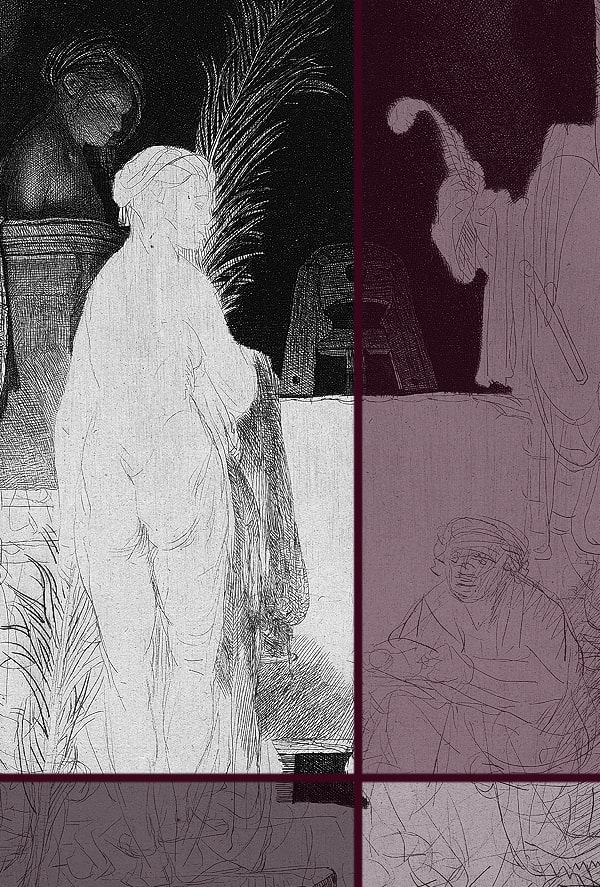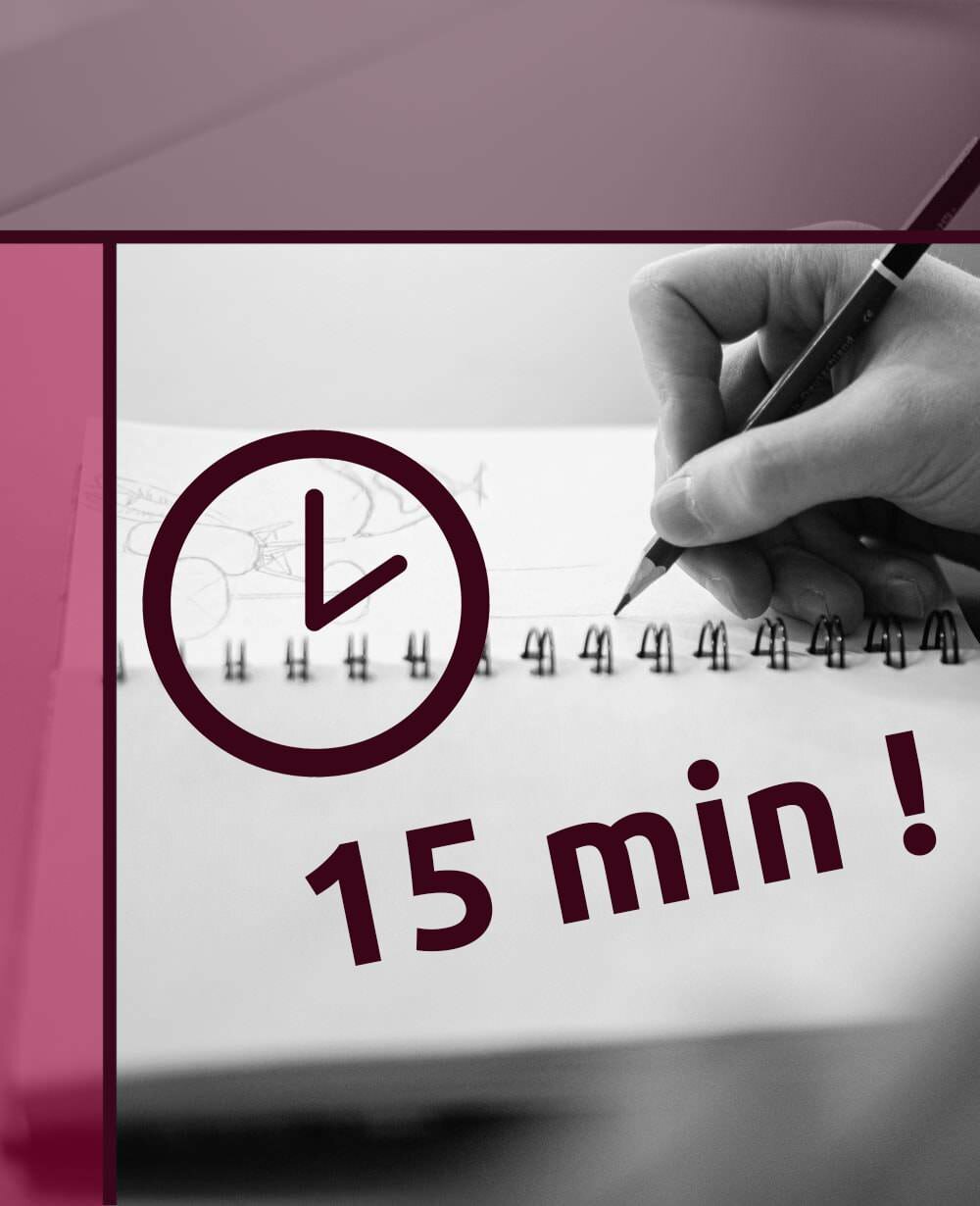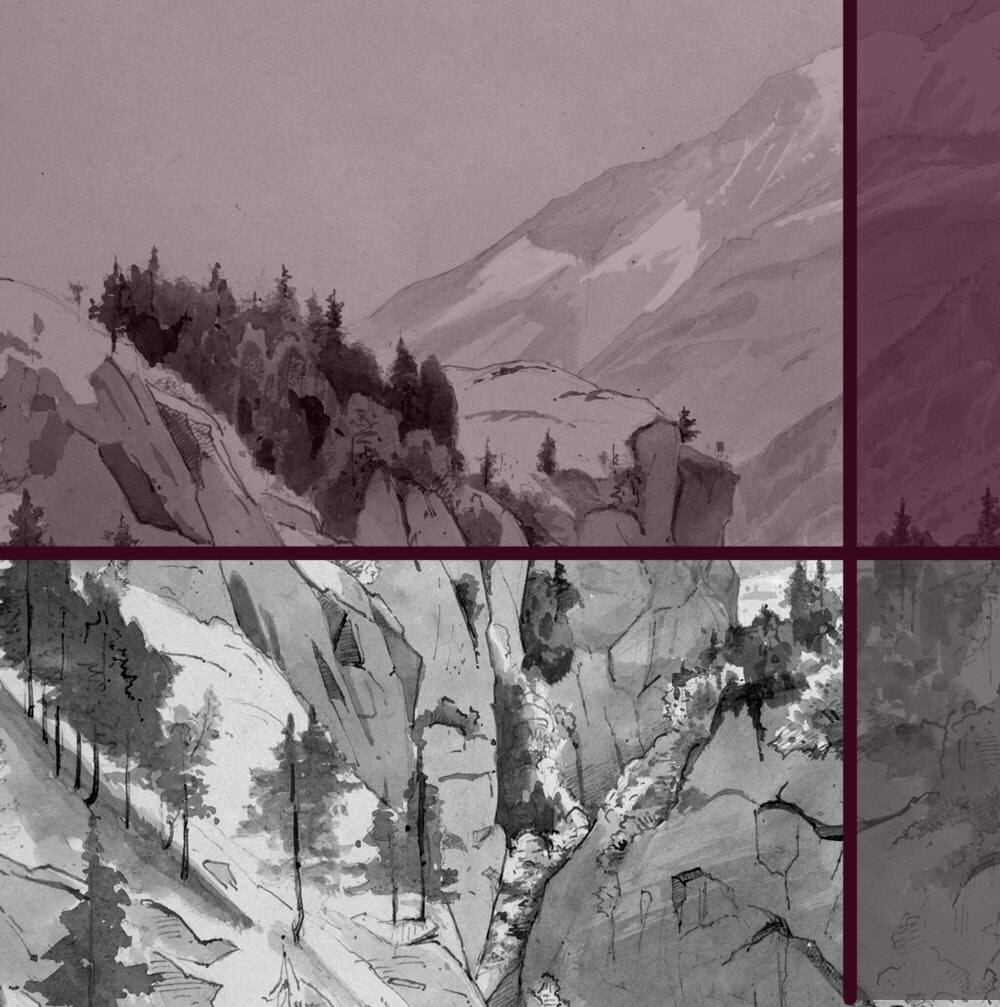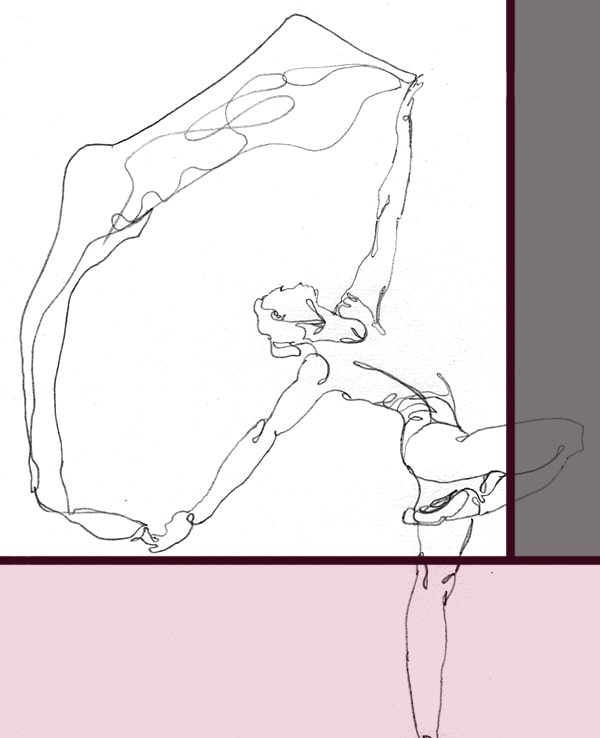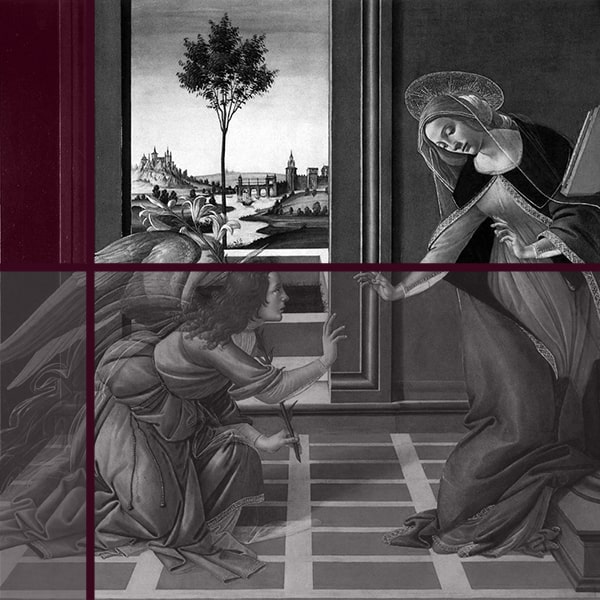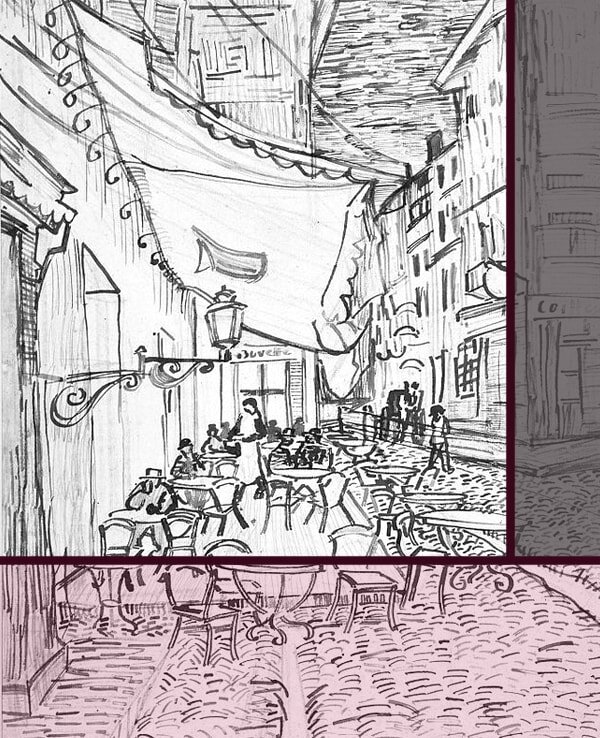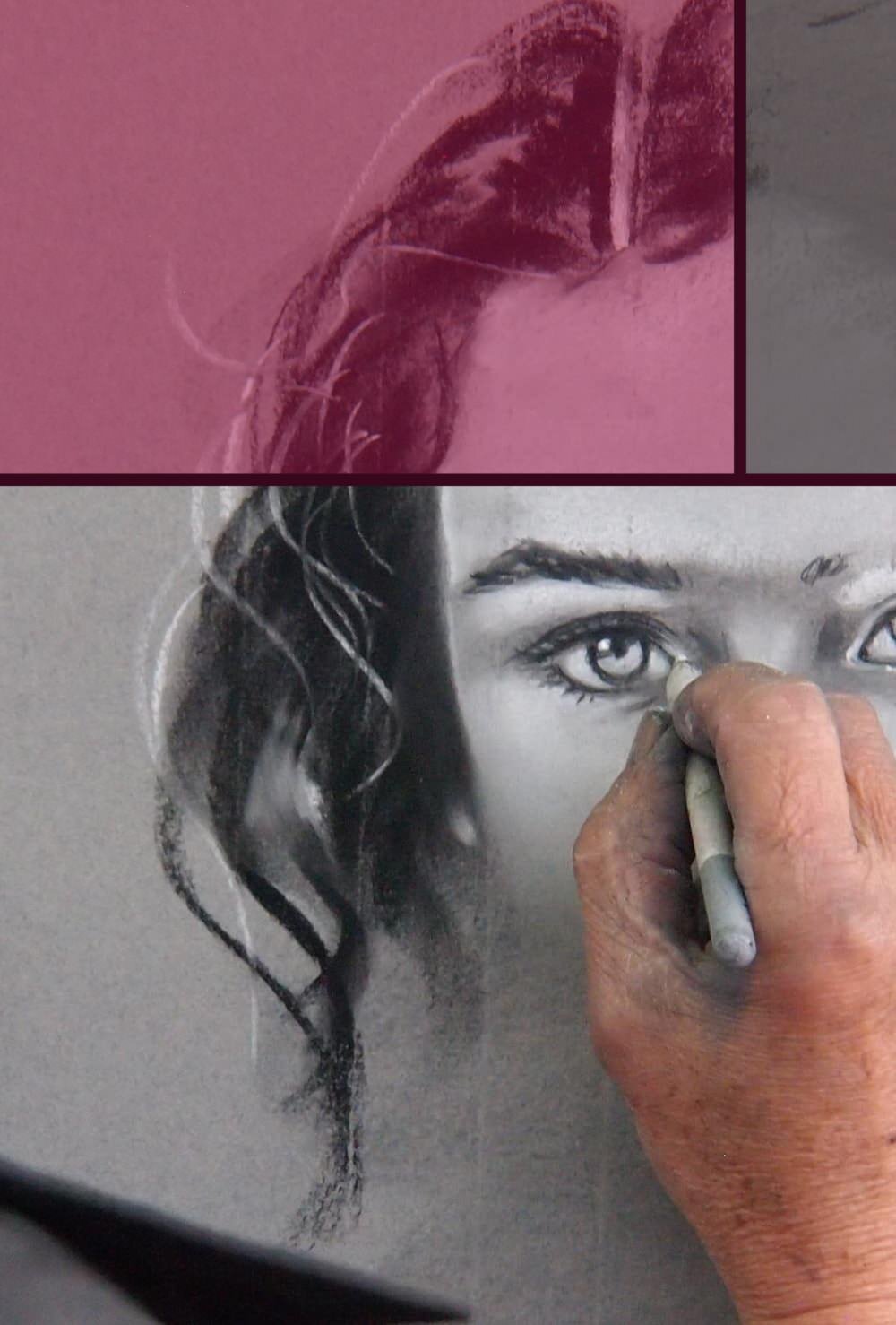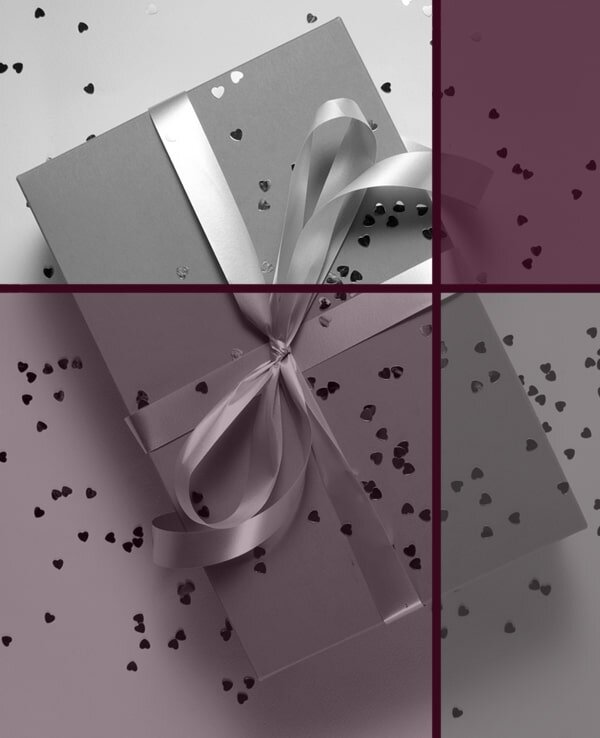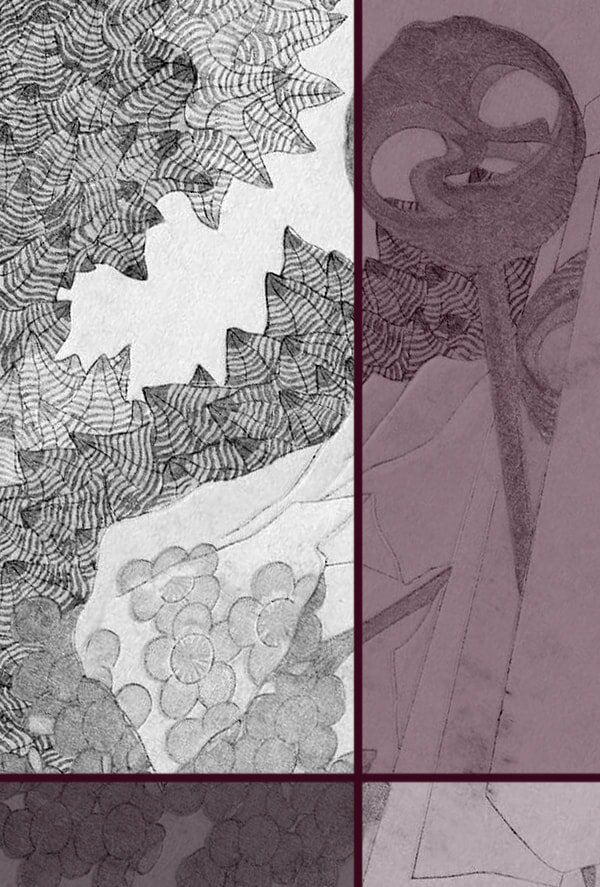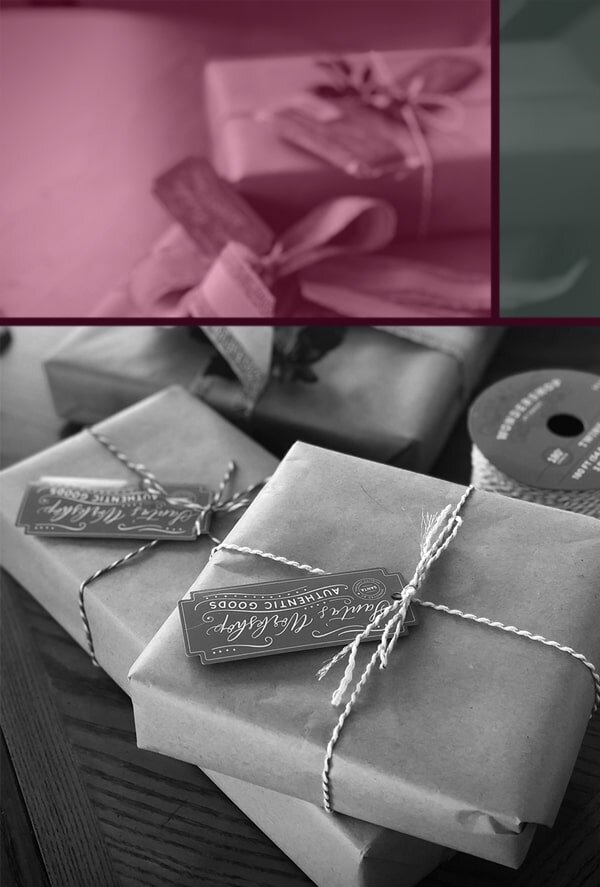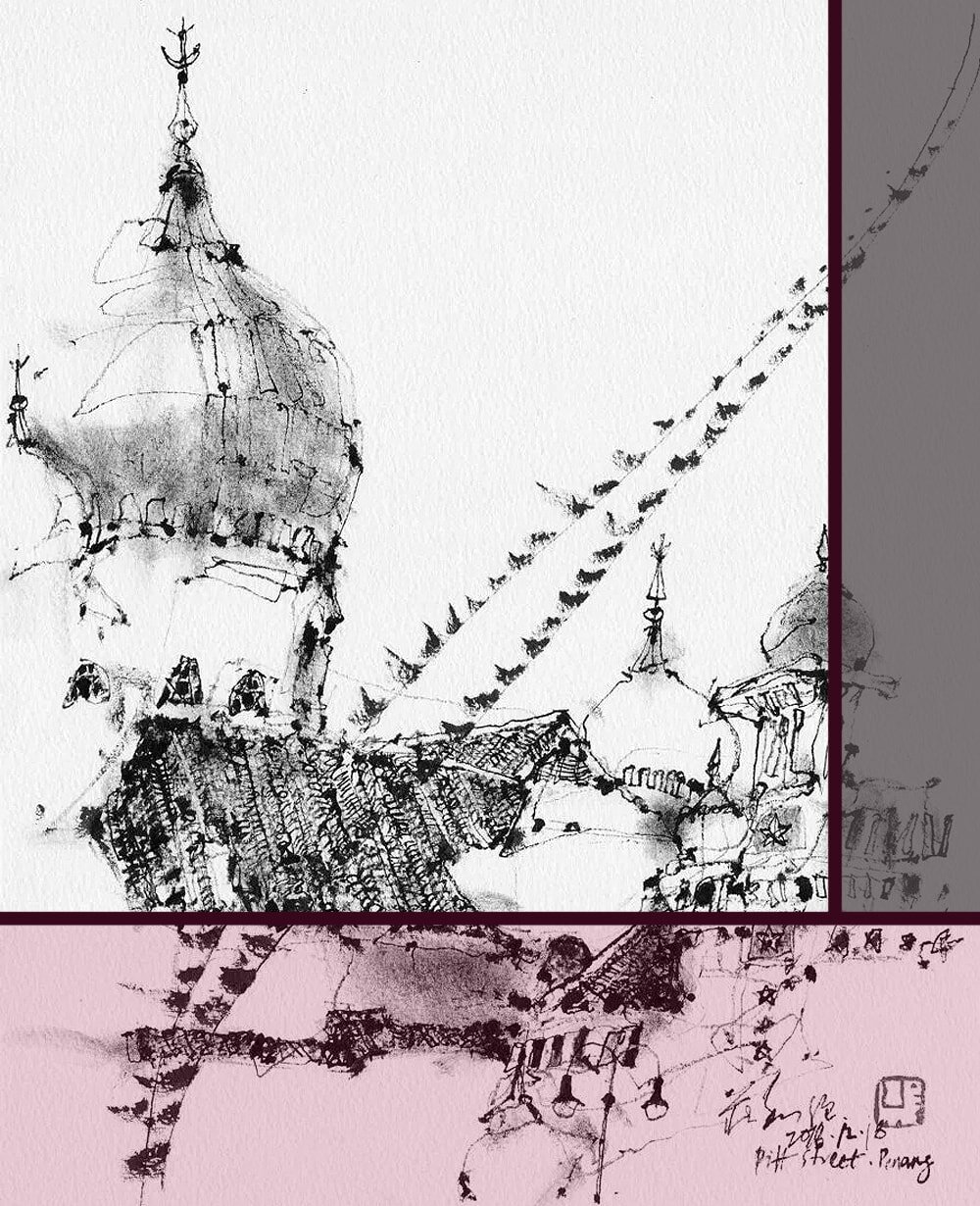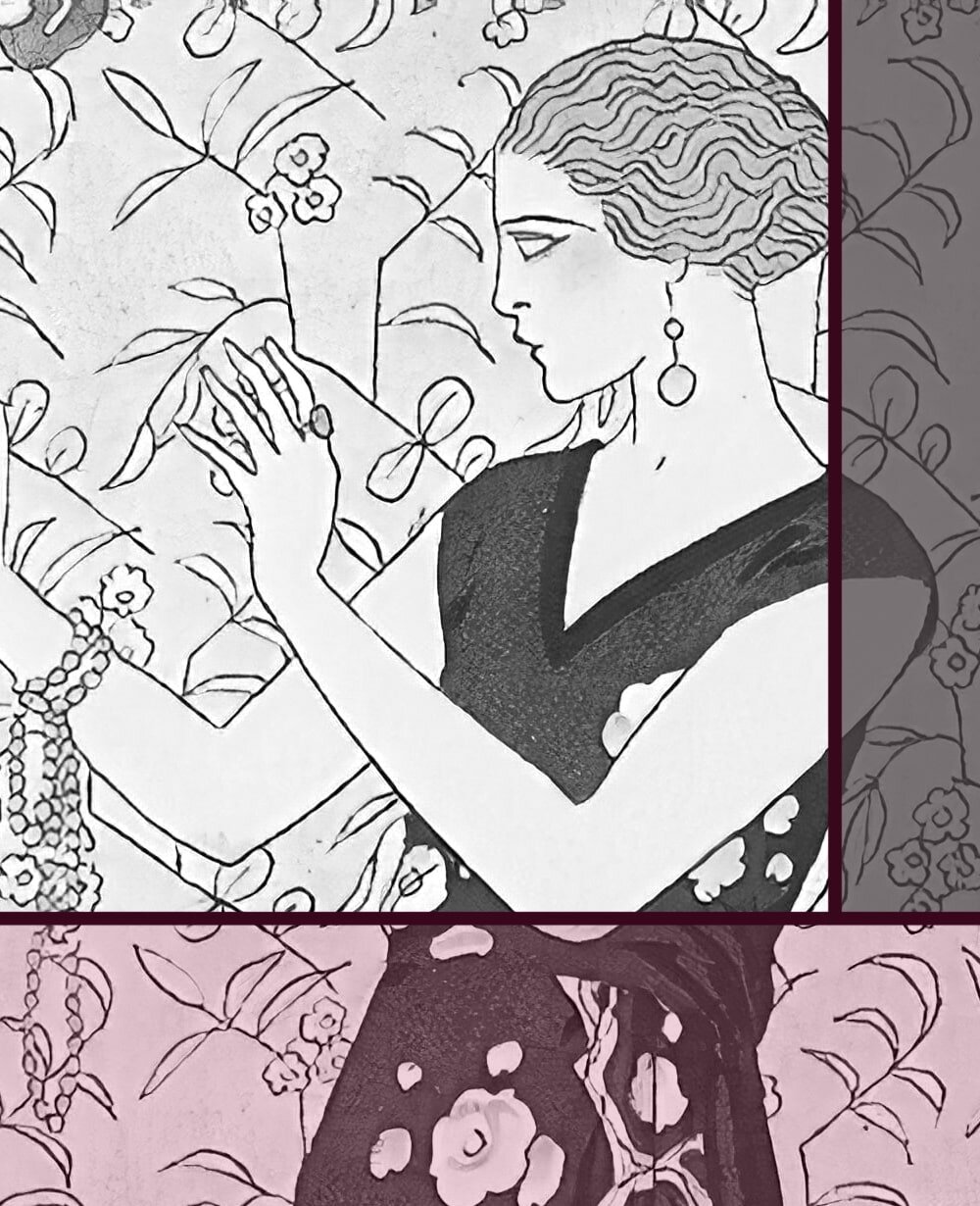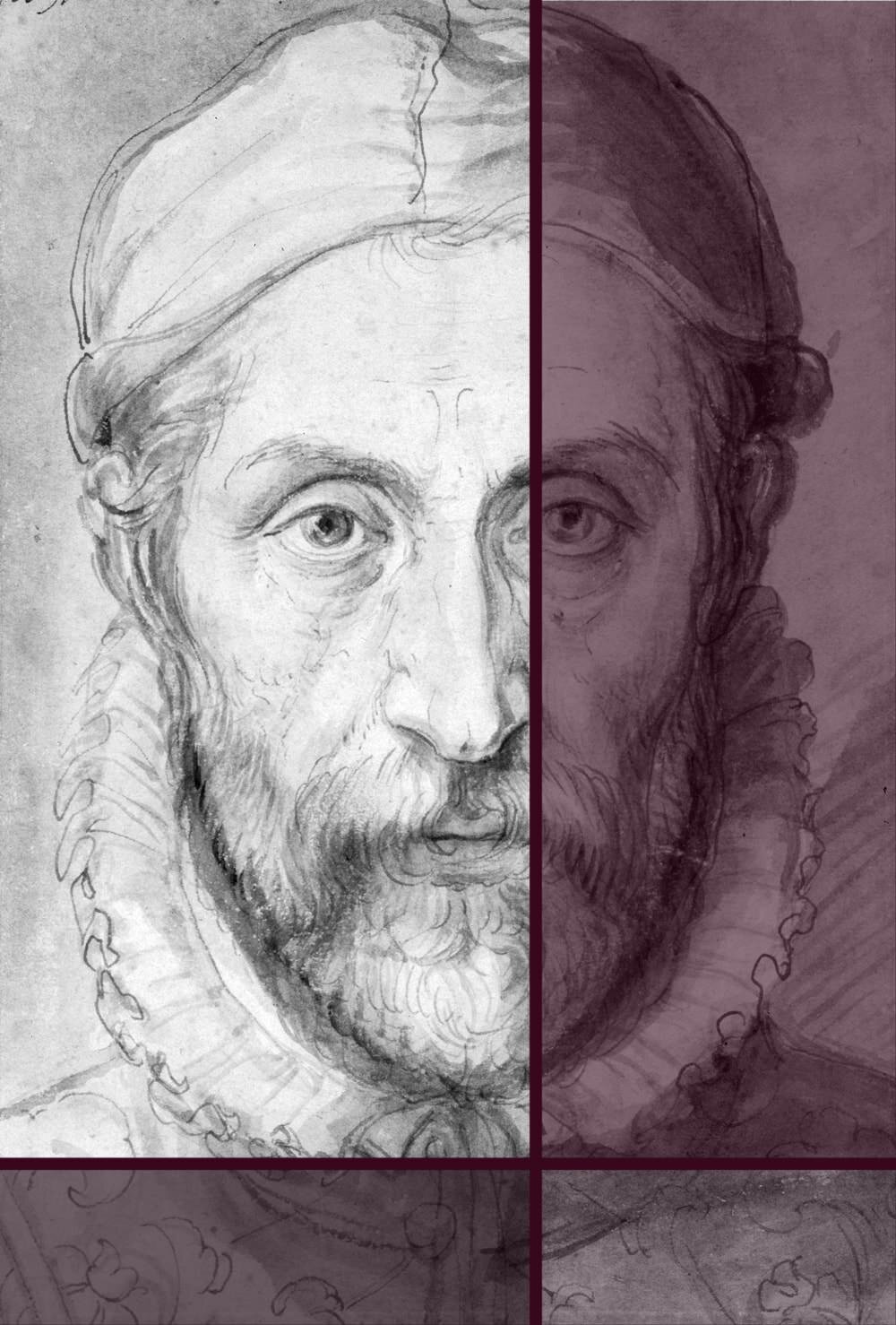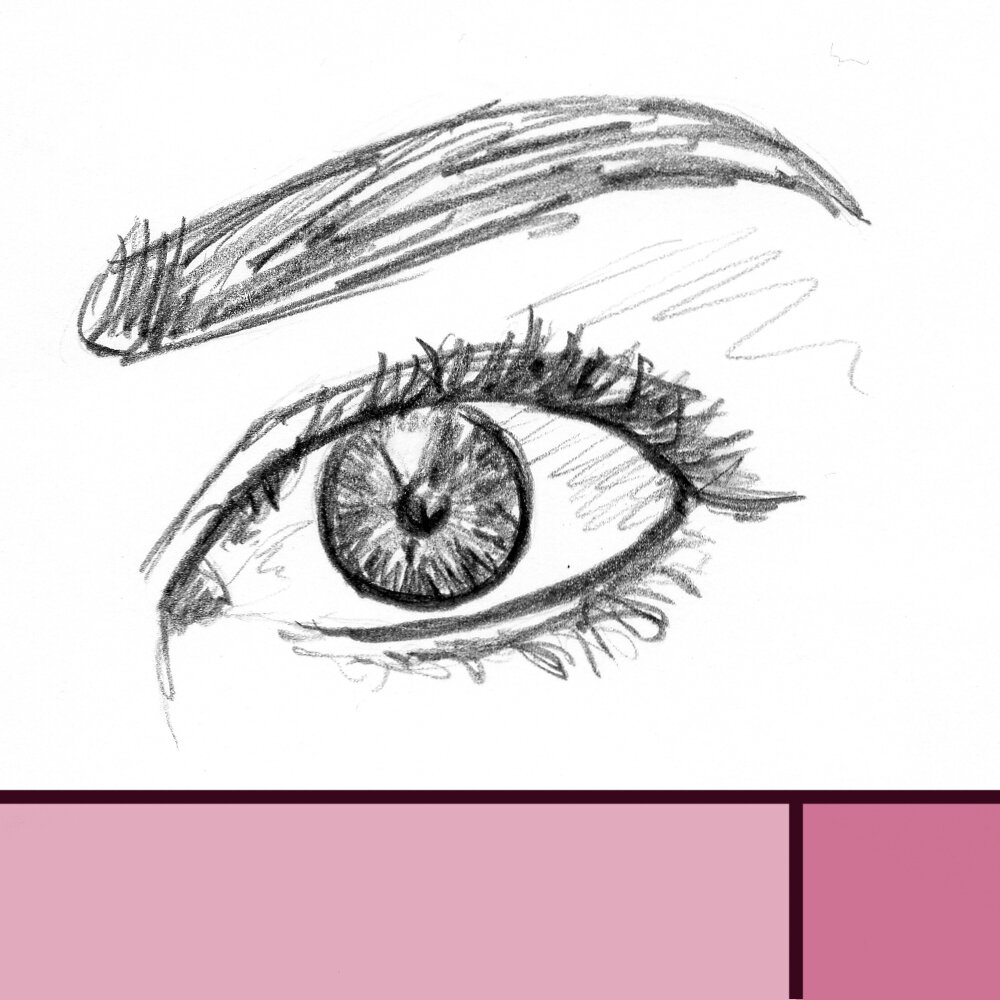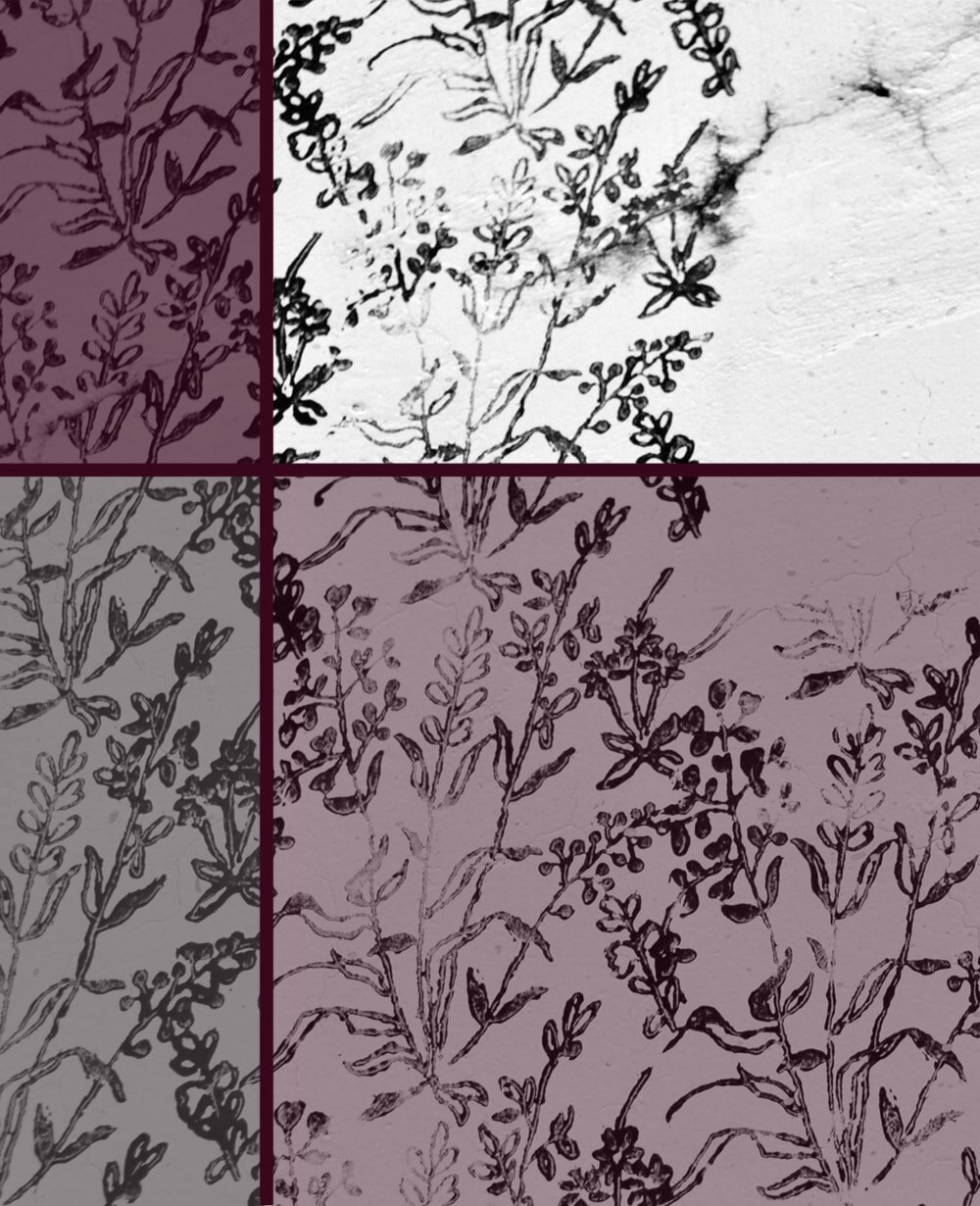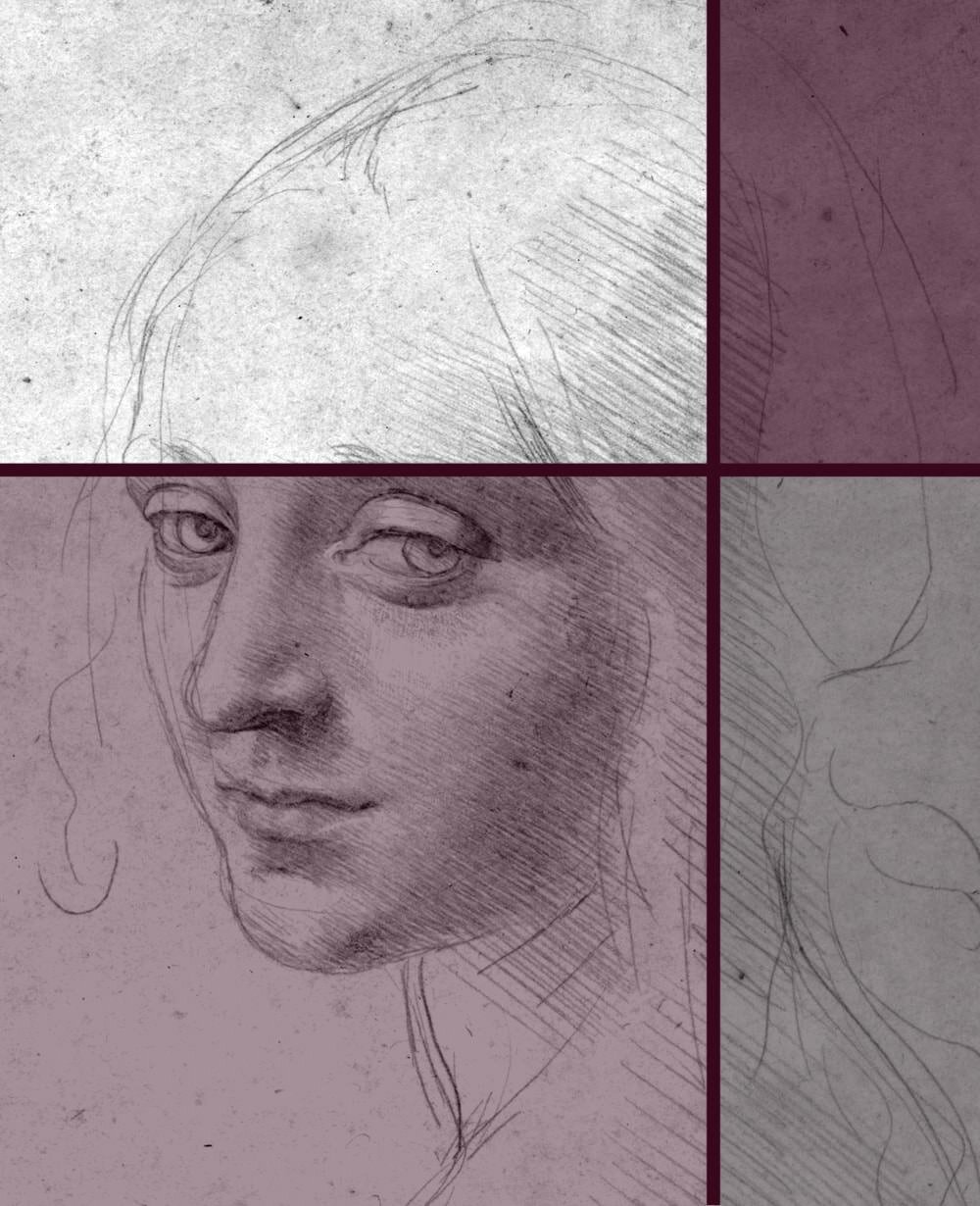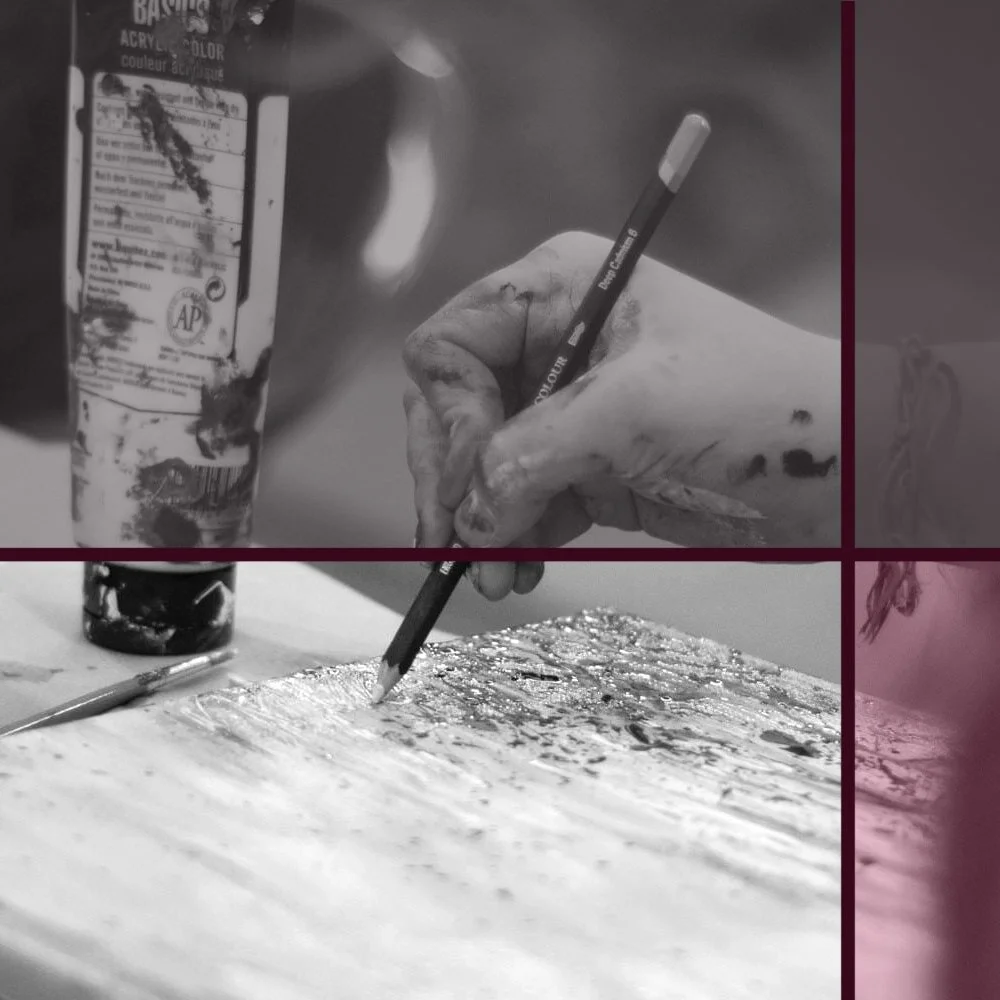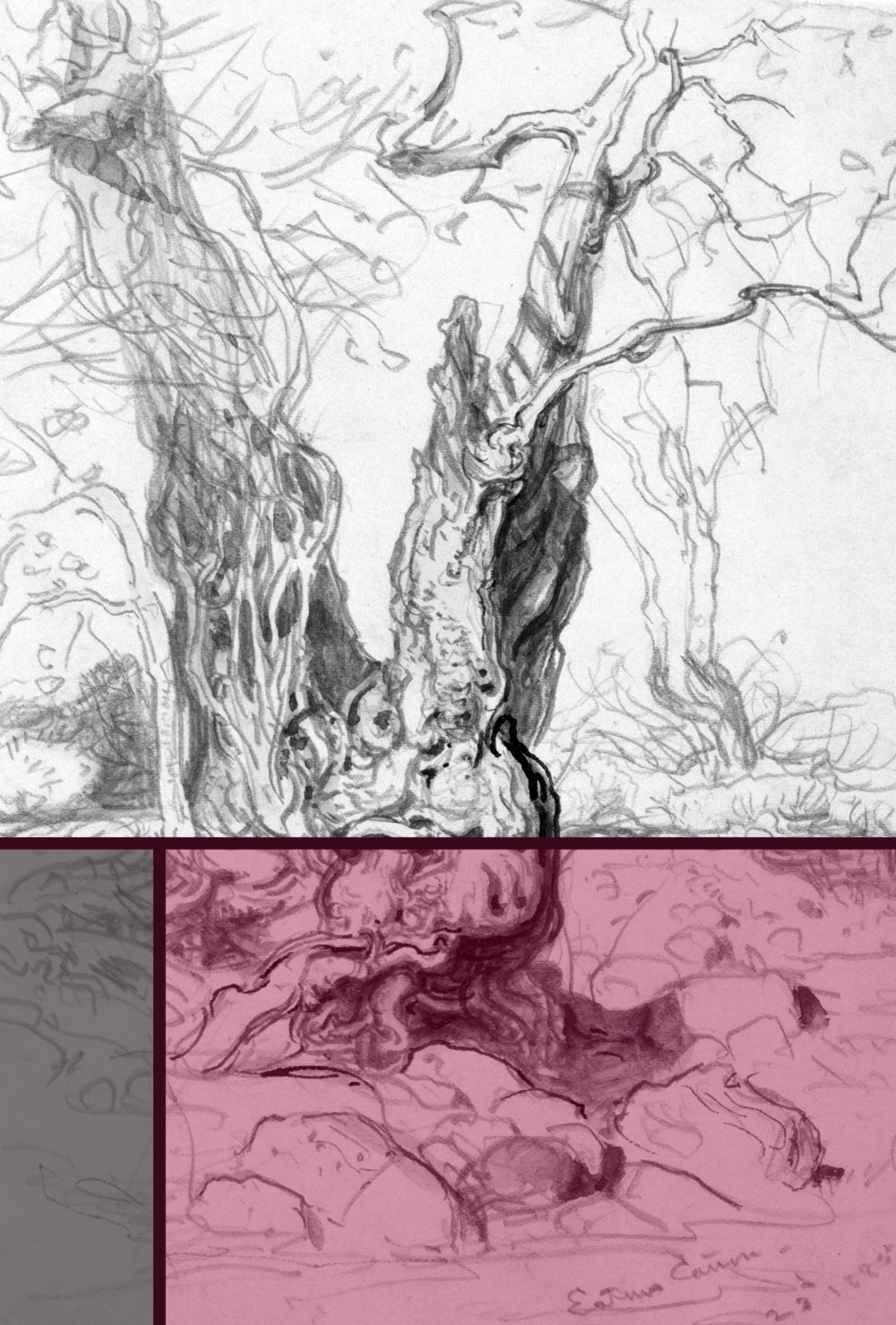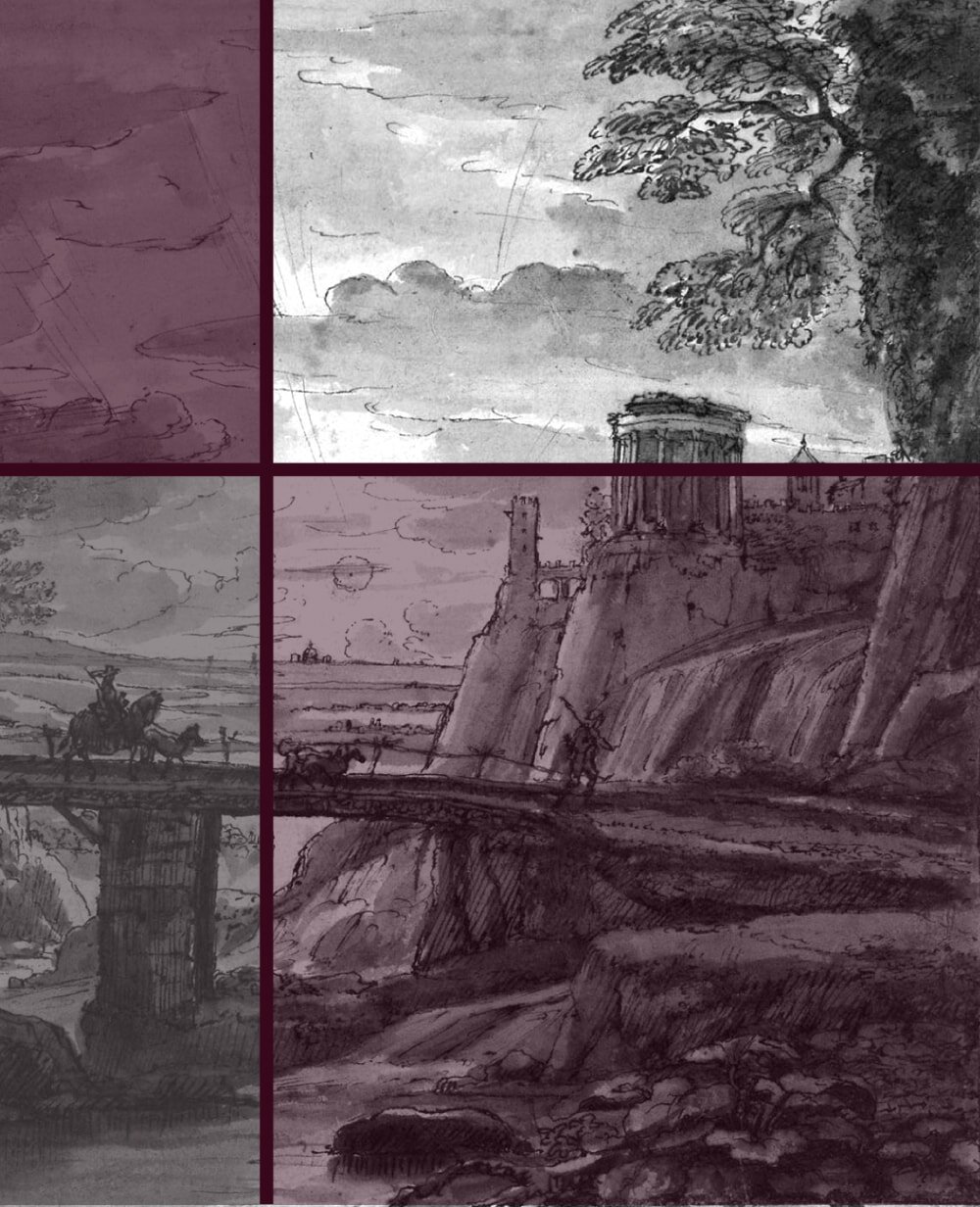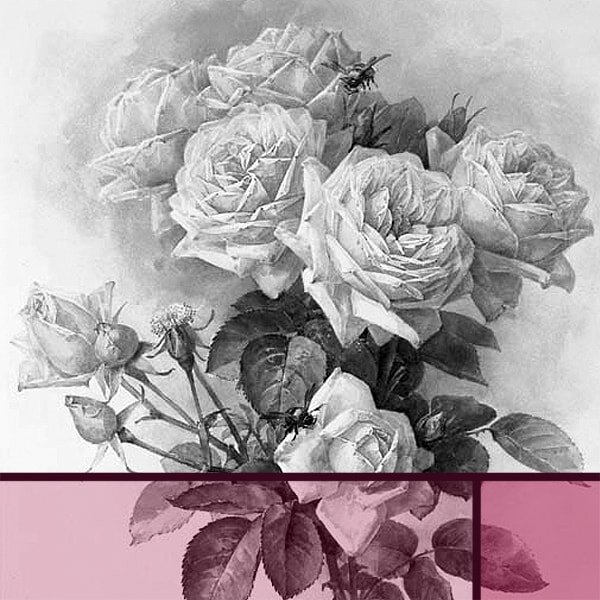101 Drawing and Painting Terms so you don’t feel Dumb as a Beginner
What is stippling? I had no idea when I started. How about the difference between focal point and point of interest? I had to look it up. I didn’t know tortillions existed until my second year at University, but oh boy what a life changer!
To give you a hand with that and help you find your way through the semantics of the arts I have created this list for you.
Especially if you're a beginner artist this glossary is something you'll likely refer back to regularly, so don't forget to bookmark it!
70/30 rule
A design principle that dictates that there should be a difference between one bigger part of your artwork (70%) and one smaller part (30%), to add more interest. This difference can be small shapes vs big shapes, detailed drawing vs rough filler, straight lines vs curved edges, dynamic composition vs resting state and so on.
Leonardo da Vinci’s Head of a girl showing 70% rough sketch or background and 30% detailed drawing
Abstract
Non-figurative. A form of art that uses colour and shapes to depict a subject (such as a physical object or an idea) without actually looking like the real thing. There are different degrees of this and an abstract chair for example may look kind of like a chair or not like one at all. For more information and examples visit the Tate Modern website.
Action line
Also Gesture Line. An imaginary (ideally curved) line in figure/gesture drawing used to create more dynamic poses. The line usually follows a character's spine and limbs and may be drawn thinly on paper in order to model the pose onto it.
Alkyds
A type of oil paint made with modified polyester that have a shorter and more uniform drying time than regular oil paints.
Alla prima
Also wet-on-wet. A painting technique where one layer of paint is applied before the other is dry.
Bleeding
One colour running into another, most often (but not exclusively) used as a term in water-colour painting.
Blending
Gradually merging together of two colours to create a gradient. This can be colours such as purple into blue, for example for a night sky, but also a darker grey pencil area into the white of the paper it’s drawn on.
Blocking in
The initial painting of basic shapes (blocks) of colour to indicate the position of parts of the subject and rough light and dark areas and to provide an underlayer on which to apply more coats of paint.
Example for blocking in
Body colour
Opaque, non-transparent colours that hide what lies underneath them entirely, as opposed to letting some of it shine through.
Calligraphy
A way of artfully drawing letters, often with a brush. The term is usually associated with the East Asian art of painting Chinese characters but also includes things like neatly illustrated letters in medieval books or ancient hieroglyphs. You can get a really pretty starter kit here.
Camera obscura
Latin for "dark chamber". Basically a more or less fancy box with a small hole in which a lens is placed that then reflects an outer image upside-down onto the opposite surface within the box. This device was used by artists, such as Johannes Vermeer, in order to trace their subject accurately.
Simple illustration of the principle of a camera obscura
Camera lucida
Latin for "light chamber". Another tracing method for artists where the subject is being projected onto the surface of the drawing. There are also really nifty apps for this for iPads.
Carbon pencil
A drawing pencil with a rod that is a mixture of graphite/clay and charcoal, making it run smoothly over paper as well as giving it nice, dark lines.
Caricature
A drawing or painting showing the subject, usually a person, in an exaggerated way, often by enlarging particular facial features. It can be used for entertainment or to convey a political message, mostly not in favour of the person depicted.
Here’s a great tutorial book, or you can have a look at my article 8 unique Drawing Styles to try out this Week for more tips and tricks.
Clutch pencil
A type of mechanical pencil, where you insert a graphite rod into a plastic or metal casing. Usually you have a different casing for different sizes of lead.
Charcoal
Animal and plant materials (carbon) heated naturally over centuries and turned into dry, black residue. This stuff comes in long singular pieces or as a pencil and it's great for drawing really dark lines. However, it smudges really easily, and the powder can be very messy.
Chiaroscuro
Using very strong contrasts between light and dark, to create a more dramatic composition. That's usually a lit area somewhere in the subject (such as a person) and a shadowed, almost black, background.
The Matchmaker by Gerrit van Honthorst as an example for chiaroscuro.
Colour bias
How warm or cool a colour is compared to other, similar hues. For example there are some cooler shades of red, such as carmine, with a rather blue-ish undertone, and crimson red, that has more yellow in it, which makes it appear warmer.
Colour temperature
How warm or cool a colour is perceived to be in general, such as red or yellow being perceived as warm and purple or blue as cool.
Colour value
How light or dark a colour is, e.g. sky blue versus midnight blue.
Complementary colours
Colours that are opposite each other in the colour wheel (or any other colour scheme). This includes red and green or yellow and blue. Using them together can create a more dramatic composition.
The colour wheel, showing complimentary colours, such as red and green or yellow and blue.
Composition
The arrangement of the different elements of a drawing or painting. This includes decisions as to what parts of the subject to include in the frame, where to place the focal point or what colours to use. See also my article on Composition in the Arts.
Contour drawing
Drawing only the outlines of a subject and its parts and not any shading. Cross-contour drawing includes many lines on the object, as if it was wrapped in pieces of string, and is meant to emphasise its solid form, usually for drawing exercises.
Contrapposto
Counterpoise. A term describing a human figure that has shifted most of its body weight on one leg, rather than equally divided between both. This often makes for a more interesting composition as it automatically creates angles at other parts of the body, such as the shoulder line.
Michelangelo’s David as an example of contrapposto
Doodle
A drawing produced out of boredom, such as during a dull lecture. It can be simple lines and shapes, or show actual objects, animals or people. Often it's just outlines, no shading.
Drawing
A picture made with tools such as pencil, pen or charcoal, as opposed to brush and paint. A piece of art can be made with both techniques though, in which case it's usually called a painting, unless the amount of drawing far outweighs the brush strokes. All in all it can be hard to pin down sometimes, so just go with whatever you prefer.
Drawing-frame
A frame with wires or threads stretched on it that cross each other to form equal squares. This is used by artists between them and their subject in order to easier get the proportions onto paper (that is set up with the same equal squares). An easier version of this is often used on paper in schools as a drawing exercise for children.
Driers
Chemicals mixed into certain oil paints to make them dry at an even speed, as often some colours (e.g. browns) try faster than other (reds, blacks).
Ébauche
The first rough sketch or underpainting, usually in regards to oil-paint, which often still leaves parts of the white canvas shining through.
Extender
A holder for your drawing pencil when it has become too short to hold with your fingers. This tool is rarely necessary, unless your pencils are obscenely expensive or your hands very large. I tend to just use the shorter pencils for finer work and get new ones when they become too short.
Figure drawing
Drawing of the human form, traditionally with a nude life model. A figure drawing may be done rough and quick or it may be highly detailed and can take several hours or even days to complete.
Fixative
A liquid that's often sprayed on drawings that easily smudge, such as charcoal or pastel, to consolidate them. You can buy high quality Fixative in art stores or on Amazon. Hairspray works as well, but it can become sticky when too much is used and may cause the paper to yellow over time.
Focal point
Part of an artwork that is created to catch the most attention of the viewer. This is decided by the artist, usually at the beginning of the work. The focal point is often drawn in more detail and with more contrast and sharper edges than the rest. This can be the same as the Point of Interest but doesn't have to be.
Genre-painting
The painting of daily activity of humans, such as eating, doing laundry, bathing in the sea, as if one was an unnoticed observer.
Example for a genre-painting on a silk folding screen by Kim Hong-do (ca. 1768).
Gesture drawing
A form of rough figure drawing with the goal to create very dynamic poses, often with slightly exaggerated gestures. Usually this is done with a life model changing poses every couple of minutes. I haven’t had time yet to make a guide for you guys, but you can use the Draw Paint Academy one for now.
Gradation
The smooth transition from one colour (or value of a colour) to another.
Graphic
A general term for a visual image or design, either physical or digital. This could be a drawing, painting, photograph, diagram, map and many others. Often a graphic also includes text.
Graphite stick
Graphite and clay pressed into shape. Basically, the drawing pencil without the wood around. Good for big drawings and shading as you can use the sides of the stick as well.
Ground
The flat surface of your canvas or sketch paper, synonymous with the picture plane (see below).
Hardness ratings
Grades from 9H to 9B (‘Blackness’) that define the ratio of graphite to clay in a drawing pencil (see my post about pencils), letting the artist know how dark the pencil lines will be. In the US the scale can be based on the numbers 1 to 4.
Hatching
A technique to create shadow effects, usually in a drawing, by using many closely spaced parallel lines. There's also cross-hatching, in which the lines are drawn overlapping at an angle, to create an even darker shadow.
Highlight
The lightest tone in a drawing, painting etc. Usually achieved by either leaving the paper white, or adding white colour on top of the existing hues.
Horizon line
Where the sky meets the ground, which is always the same as your eye level.
Illustration
A drawing or painting (manual or digital) created specifically to show or explain a message, concept or idea. Often this is used in advertising, where the illustrator turns someone else's idea into a visual image, or in books to give the reader some aid in imagining a part of the story.
Impasto
The texture created by the artist's brush or painting knife when applying thick layers of paint.
Example for impasto on a painting by polish painter Roman Michalowski.
Imprimatura
A ground layer of paint that covers the white canvas, onto which then the actual artwork is painted.
Key
The overall value of a drawing. A dark drawing has a low key, a light drawing has a high key.
Lay figures
Another word for mannequins, wooden dolls that come in all shapes and sizes and are are used by artists to draw figures.
Lead
The common name for the rod inside a drawing pencil, the part that makes the mark on your paper. It's actually graphite though, which is carbon powder, made from mined rocks or coal and then mixed with clay.
Lifting out
Removing charcoal marks with an eraser (usually the kneadable type) to correct mistakes or create highlights.
Linear perspective
A technique used to create the illusion of depth by letting all parallel lines (visible or invisible) converge towards one or several single points on the horizon (see vanishing point). This is most commonly known from streets or train tracks (see one-point perspective) but can be used for any subject.
Mahlstick
A long wooden stick with padding at one end. It's used as support for an artist to lean against the canvas, for a more steady hand to to draw or paint fine details.
Use of a Mahlstick as shown in the 2003 film ‘Girl with a Pearl Earring’
Mechanical pencil
A plastic or metal casing in which you can manually insert a graphite rod to draw with. They don't usually need sharpening (unless you want a very fine edge) and they use the lead very economically.
Medium
The material you draw with (pencil, charcoal, oil) as well as any chemical mixed with paint to change its consistency, e.g. water.
Memento mori
A traditional type of artwork meant to remind the viewer of their own mortality. It usually uses symbols, such as skulls, clocks or perishable things like food or flowers.
Memento mori by Frans van Everbroeck.
Middle ground
The part of a drawing or painting between the foreground and background.
Mixed media
Different media are used in the same artwork, e.g. acrylics and charcoal or pencil and ink. This also includes media that isn't usually part of the artistic process, such as the straw that Anselm Kiefer glued to some of his paintings or the textiles Robert Rauschenberg uses in his.
Monochrome
A painting, drawing or photograph showing different values of one single colour, often (but not always) grey tones.
Motif
An element of a painting, piece of architecture etc. It may either be shown just once or may be repeated in a kind of pattern in the artwork, or across several works. The French Lily (Fleur De Lis) is an example of that as it's usually used in conjunction with other elements, rather than as a standalone piece of art.
The Badshahi Mosque in Lahore showing several examples for motifs
Negative space
The shapes between elements in a drawing. Such as the space between two figures. Opposite of positive space (see below)
One line drawing
A drawing produced from one single line, without lifting the pen/pencil during the process. This is an art in its own right but is also often used as a drawing exercises to loosen up.
One-point perspective
A kind of linear perspective. A way of creating the illusion of depth in a drawing by letting all parallel lines run towards the same point on the horizon (see vanishing point).
The lines don't necessarily all have to be visible, they can be imagined in order to draw several objects that have the same height in real life but are at different distances from the viewer, such as a row of trees.
See my related article One-point perspective: How it works and how to use it for your Art for more detail.
Vincent van Gogh, ‘Bedroom in Arles’ as an example of one-point perspective
Open time
The time that fresh paint (acrylic, oil...) remains wet enough to work it with a brush. This time can be extended or shortened by mixing the paints with certain chemicals.
Painting
A picture made with brushes and paint, rather than pencil, pen or charcoal. If an artwork consists of both techniques the word painting is usually used.
Palette
The set of colours chosen for a drawing (or painting), as well as the round, flat piece of wood or plastic that artists put their acrylics or oil paints on. A limited palette means restricting the number of colours used in the artwork.
Palette knife
A flat metal blade that is used to mix paint (so as not to ruin your nice brushes) and to create certain 3D textures in paint on the canvas.
Pentimento
An alteration to a painting, where traces of the previous work still remain. This includes only changes to the subject itself, like fixing proportions or slightly altering the position of something, but not entirely new work painted on top of an unrelated older piece.
This can sometimes be seen in artwork in museums where certain scanning-techniques are used on the paintings that can reveal such changes.
Picture plane
The imaginary plane between the artist’s eye and the object being viewed, usually used to explain perspective topics. Imagine it like a sheet of glass or a window, vertically between your position and the scene you’re drawing.
Pochade
A kind of quick landscape sketch (drawing or painting) that's done en plein air, usually in a relatively small size. Pochade boxes are portable wooden boxes that can transport paper and materials as well as give a platform to paint on outside.
Point of interest
A sort of natural focal point that does not necessarily depend on the decision of the artist. For example, eyes are a point of interest in any portrait drawing, because humans communicate a lot with the eyes so it is in our nature to look there. This can be the same as the focal point, but it doesn't have to be.
There can be several points of interest but usually only one focal point.
Positive space
The shape of an object within a drawing (such as a person or a tree). Opposite of negative space.
Primary colours
Undiluted blue, red and yellow, which are the only colours that cannot be mixed by combining other colours (as opposed to green, which is mixed with blue and yellow and thus is a secondary colour).
Quadratura
A painting technique that creates the illusion of depth. This was often used on historical ceilings to make them appear much higher than they were. Quadratura is a form of recession (see below).
Example for quadratura in the Church of St. Ignatius, Rome
Raking light
A light source set at an acute angle (nearly parallel to the ground), casting very long, strong shadows that create interesting visuals. This can be an artificial source of light or the sun when it's about to disappear behind the horizon.
Recession
Creating the illusion of depth (3D space) within a flat drawing or painting. This can be done by separating foreground and background by perspective or colour temperature for example (more blue in the background).
Rule of thirds
A design rule to make drawing or painting (or photograph) more interesting and balanced. The paper is divided into nine parts, three horizontally and three vertically. The focal point is placed on the imaginary division lines or their intersections, rather than directly in the middle or too much to the side of the work.
The Rule of Thirds as shown on Turner’s The Fighting Temeraire.
Scribble art
Drawings produced in a very squiggly style with a lot of small curves and loops. It's produced in a similar way to writing, just that the artist isn't making any actual letters. There's a great tutorial on Scribble art on the Artists network and I also write about it in my article 8 unique Drawing Styles to try out this Week.
Secondary colours
Colours that are mixed using the primary colours blue, red and yellow. There are three secondary colours: green (blue + yellow), orange (red + yellow) and purple (blue + red).
Sfumato
A painting technique that creates a smooth transition between colours by blending them. A popular example are the skin tones in Mona Lisa's face.
The skin tones on Mona Lisa’s forehead and cheeks are a good example for sfumato.
Siccative
A chemical added to oil colours to make them dry faster. It's used only for acceleration, not to equal out drying times as driers do (see above).
Sight-size
A drawing technique where the easel is placed perfectly vertical at eye level, to avoid distortions. The size of the subject and the proportions are measured with a pencil from where the artist is standing. Because of that the distance between subject and easel determines the size of the drawing.
Sketch
The unrefined version of a drawing or painting, as explained in my related post about sketching. Usually done quickly, either to study a subject, warm-up or practice skills such as proportion and perspective. However, the lines between drawing, painting and sketch are blurred and it is not always clear where one ends and the other begins.
Sketch artist
Usually this means the people working for the police, creating drawings of criminals from descriptions by witnesses of a crime. However, technically this includes any artist specialising on "quick" drawings, as sketching itself is not just an exercise to learn drawing but also a separate form of art in itself.
Still life
Drawing or painting of inanimate (still) objects, that can be either natural or man-made. Here are some related postsstill-life-related posts, if you want to read up on it in more detail.
Stippling
Creating a pattern of many small dots that will blend into a shape when viewed from further away. You can create the most intricate drawings with this effect, though of course it is quite time intensive.
An example for stippling.
Street art
Visual art created in public places, mostly on large surfaces. This practice may be sanctioned by the city or it may be done illegally. It includes chalk drawings on the street, often as entertainment for passers-by, or various forms of graffiti on the side of buildings or rail tracks. Banksy for example is a street artist.
Stretcher bar
The wooden frame (usually pine) that canvases are stretched on for paintings.
Study
A sketch, drawing or painting to "get to know" a specific subject, such as a person. For a big project an artist often makes several studies from various angles in order to prepare for the final piece.
Stylus
In drawing a stylus is an extender for holding charcoal. It's usually used when the piece of charcoal becomes too short to comfortably hold with your fingers. It looks a bit like those fancy cigarette holders ladies used to have in the 1920's.
Tertiary colours
Colours created by mixing more of a primary colour into a secondary colour, such as more blue into green in order to create teal.
Primary, secondary, tertiary and quaternary colours
Thumbnail
A small, quick sketch of a subject, usually in order to work out a good composition.
Tint
A colour that is lightened with white to reduce darkness, e.g. sky blue.
Tone
The level of lightness/darkness of a drawing or painting. Base tones are the darkest (least illuminated) part of the image. Then follow half tones, light tones and the most illuminated are your highlights.
Tooth
The surface texture of drawing paper. Paper for pen will have less tooth (be smoother), for charcoal it needs more tooth (courser).
Tortillon / blending stump
A small stick, usually made of rolled paper, that artists use to blend lines. It is used by professionals instead of their fingers, because the latter leave an oily residue that discolours over time and are less accurate.
Trompe l'oeil
A drawing or painting style that creates a certain illusion (often depth). This can be a 3-dimensional landscape on a flat wall, or a part of the painting that seemingly moves out of the frame.
Mural by John Pugh as an example for Trompe l'oeil.
Two-point perspective
A type of linear perspective in which the parallel lines of the drawing all move towards two vanishing points, rather than one. A common example is drawing a box with two sides visible (rather than straight on), where either side will converge towards its own vanishing point.
Underdrawing
A kind of base drawing, usually in thin pencil or monochrome ink, to establish the main components of the composition.
Vanishing point
A point on the horizon towards which a series of visible or imaginary parallel lines of a picture converse. This is used to create depth in a 2-dimensional work of art. The most common example used are train tracks where both sides seem to converge towards each other in the distance, making them look like a triangle.
Viewpoint
The position from which the artist draws the sketch, such as from above (bird's eye), from straight on (eye-level) or from below (worm's-eye).
Wash
Watercolour paint or ink highly diluted with water. Painting with that technique creates a semi-transparent colour where different layers run neatly into each other without creating edges (tide marks).
Did you enjoy this article or feel like you have anything else to add? Feel free to leave me a comment below!
If you like this post, please share it, so others may like it too!

